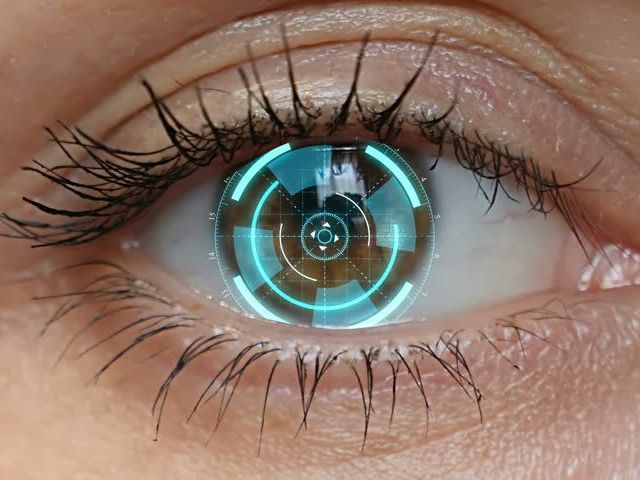Thank You For Attending LIGHT 2023
LIGHT 2023 Program
-
Welcome
Jeffrey K Luttrull, MD, Exec Director
-
Laser sculpturing of retinal pigment epithelium.
Andrii Korol, Oleg Zadorozhnyy, Sergii Fedchenko, Nataliya Pasyechnikova. The Filatov Institute of Eye Diseases and Tissue Therapy of the NAMS of Ukraine, Odesa,Ukraine
-
Nanosecond laser synchronized with ultrasound for treatment of choroidal neovascularization.
Yannis M. Paulus,1,2 Mingyang Wang, 2 Xinmai Yang,3 XuedingWang2. 1 Department of Ophthalmology and Visual Sciences, University of Michigan, Ann Arbor, MI, 48105 2 Department of Biomedical Engineering, University of Michigan Ann Arbor, MI, 48109 USA 3 Institute for Bioengineering Research and Department of Mechanical Engineering, University of Kansas, Lawrence, KS, 66045 USA
-
Temperature Increase and Damage Extent at Retinal Pigment Epithelium Compared between Continuous Wave and Micropulse Laser Application.
Kishiko Ohkoshi1,2, Keiji Inagaki 3,4, Ralf Brinkmann5, Yoko Miiura 5, 6. 1)Department ofOphthalmology, Hiroo Hanezawa Internal Medicine and Ophthalmology Clinic, Tokyo150-0012, Japan2)Department of Ophthalmology, St. Luke’s International Hospital, Tokyo104-8560, Japan 3)Inagaki Eye Clinic, Chiba 279-0011, Japan 4)Department ofOphthalmology, Faculty of Medicine, Juntendo University, Tokyo 113-8421, Japan 5)Institute of Biomedical Optics, University of Lübeck, 23562 Lübeck,Germany Medical Laser Center Lübeck, 23562 Lübeck, Germany 6)Department of Ophthalmology, University of Lübeck, 23562 Lübeck, Germany
-
Thermal laser photocoagulation in vasoproliferative tumor (VPT) with exudative retinal detachment: a case report.
Bianco L, Battaglia Parodi M, Antropoli A, Arrigo A, 1 Saladino A, Del Fabbro S, PiliL, Bandello F. Ophthalmology Department, Vita-Salute San raffaele University Milan, Italy
-
Crossover to PDT after the unsuccessful micropulse laser treatment of central serous chorioretinopathy.
Maciej Gawęcki (1,2), Andrzej Grzybowski (3,4). Dobry Wzrok Ophthalmological Clinic, 80-822 Gdansk, Poland, (3) Department of Ophthalmology, Pomeranian Hospitals, 84-200 Wejherowo, Poland, (4) Department of Ophthalmology, University of Warmia and Mazury, 10-719 Olsztyn, Poland (4) Institute for Research in Ophthalmology, Foundation for Ophthalmology Development, 61-553 Poznan, Poland
-
Photobiomodulation for intermediate age-related macular degeneration in a real-word setting.
Battaglia Parodi M, 1 Moretti E, 2 Bianco L, 1 Antropoli A, 1 Arrigo A, 1 Saladino A, 1 Del Fabbro S,1 Pili L, 1 Bandello F. 1 1 Ophthalmology Department, Vita-Salute San Raffaele University Milan, Italy, 2 Centro Oculistico Quattroelle, Milan, Italy
-
Acute atrophic evolution of drusenoid pigment epithelium detachment after photobiomodulation.
Alessio Antropoli MD1,Maurizio Battaglia Parodi MD1, Alessandro Arrigo MD, PhD1,Maria Vittoria Cicinelli MD1, Lorenzo Bianco MD1, AndreaSaladino MD1, Enea Moretti MsC 2, Francesco Bandello MD 1,Ahmad Mansour MD 3 1 Ophthalmology Department, Vita-Salute San Raffaele University, IRCCS San Raffaele Scientific Institute, Milan, Italy
-
Early experience with panmacular laser.
Igor Kozak, MD.Moorfields Eye Clinic, Abu Dhabi, United Arab Emirates.
-
Improved Visual Fields Following Panmacular Subthreshold Diode Micropulse Laser (SDM) for Open Angle Glaucoma and Other Optic Atrophies.
Jeffrey K Luttrull, MD1, Sathy V Bhavan, MD1. Ventura County Retina Vitreous Medical Group, Ventura, California, USA.
-
Progressive thickening of retinal nerve fiber and ganglion cell complex layers following SDM Vision Protection Therapy for Open Angle Glaucoma: Evidence of Therapeutic Retinal (CNS) Neuroregeneration.
Jeffrey K Luttrull, MD1, Radouil Tzekov, PhD, 2 Sathy V Bhavan, MD1.1. Ventura County Retina Vitreous Medical Group, Ventura, California. 2. University of South Florida, School of Medicine, Dept of Ophthalmology, Tampa, Florida,USA.
-
Journal Club Discussion
Lois N, Campbell C, Waugh N, et al. Diabetic Macular Edema and Diode Subthreshold Micropulse Laser: A Randomized Double-Masked Non-inferiority Clinical Trial. Ophthalmology 2023;130(1):14-27. doi:10.1016/j.ophtha.2022.08.012
Presenter and Moderator: Igor Kozak, MD
Luttrull JK,Gray G, Bhavan SV. Vision protection therapy for prevention of neovascular age-related macular degeneration. Sci Rep. 2023;13 (1):16710.doi:10.1038/s41598-023-43605-w
Presenter and Moderator: Jeffrey K Luttrull, MD
EST. 2014
What is LIGHT?
LIGHT is an annual meeting exploring the vast array applications for retinal laser treatment emerging from a rapidly improving understanding of the mechanisms of retinal laser effects.
Our mission is to reduce worldwide visual disability and blindness by facilitating interaction and collaboration between global leaders in the basic science and clinical application of laser and light-based therapies for retinal disease.
The insights from our meetings are leading to a new and better understanding of the causes of retinal disease, and thus new approaches to disease treatment and prevention. LIGHT is dedicated to the idea that these uniquely laser-accessed innovations and insights will be key contributors to the future management of the most important retinal causes of visual loss.

Who should attend?
The LIGHT conference brings together the world's leading experts in retinal laser therapy, both clinical and basic scientists. However, the conference is open to all clinicians and investigators who are interested in expanding their scientific and clinical knowledge. While some of the topics may be complex, the goal of the conference is always to improve clinical outcomes for patients.
What are LIGHT meetings like?
Truly interactive. LIGHT meetings are a unique way to learn about the latest advances in retinal laser therapy.
Presentation
Anyone can submit an abstract for presentation. Abstracts are reviewed and selected by the LIGHT Board of Directors.
The authors are given 8-minutes during the meeting to present their findings clearly and completely.
Question & answer
After each paper presentation, there is an 8-minute question-and-answer session and discussion open to all attendees. This is where the value of LIGHT is most apparent, as attendees can learn from each other and discuss the latest research in the field.
Networking
Conversations can continue into meeting breaks, lunch, and the post-meeting reception. This allows attendees to network with each other and build relationships that can be helpful in their research and clinical work.

Submit a Paper
Submit a Paper
Thank you for your submission.
Please try again later.
Contact Us
For LIGHT information please email directly Executive Director Jeffrey K Luttrull, MD, at jkluttrull@proton.me.
All Rights Reserved | The International Retinal Laser Society
Board of Directors
Executive Director: Jeffrey K Luttrull, MD, USA
David Kent, MD, Ireland
Igor Kozak, MD UAE
Stephen H Sinclair, MD, USA
Kishiko Ohkoshi, MD, PhD, Japan
Maurizio Battaglia-Parodi, MD, PhD, Italy
Maciej Gawecki, MD,, PhD, Poland
Stela Vujosevic MD, PhD, Italy
50 minutes
